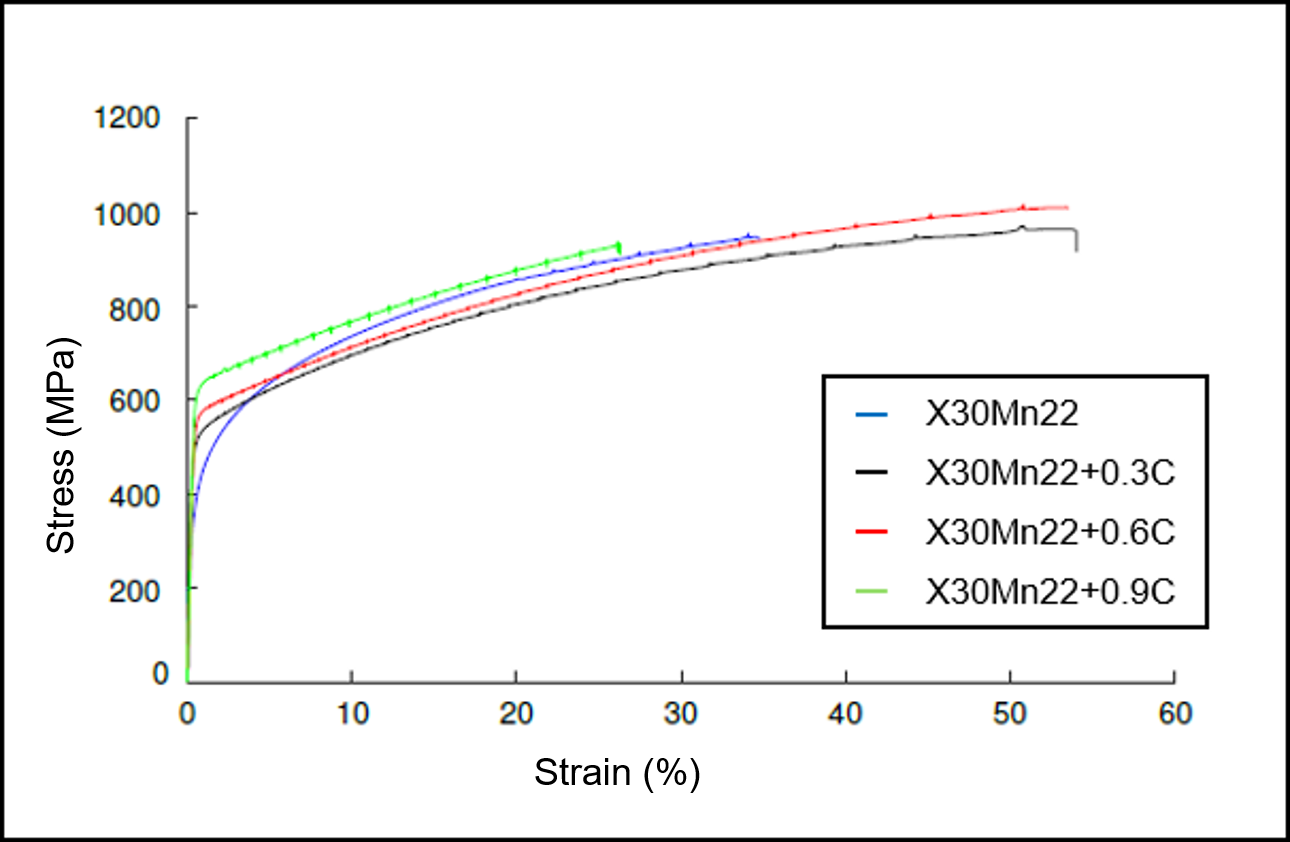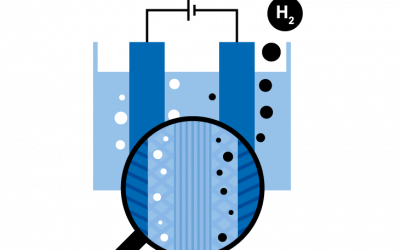Press Release August 30th, 2021
Powder Blends Make It Possible: Specifically Composed LPBF Alloys Result in Additively Manufactured Steels with Custom-Made Properties
Currently, the selection of customized alloys for Laser Powder Bed Fusion (LPBF) is very limited on the market. However, alloys that are composed especially for LPBF would lead to optimum production and application-adapted mechanical and microstructural component properties. The production of such specific LPBF alloys using powder blends is a promising approach: Pre-alloyed, already established powder materials are specifically influenced in their chemical composition by the addition of elementary powders. Scientists from the Chair Digital Additive Production DAP and the Steel Institute IEHK at RWTH Aachen University put this approach to the test and were able to modify the properties of additively manufactured steels in their experiments.
“Geometry for free” and “complexity for free” are the core messages of Additive Manufacturing (AM). Actually, however, even more is possible, since microstructural and mechanical component properties can also be adapted to later application requirements through targeted compositions of the powder material. For this purpose, the AM process Laser Powder Bed Fusion (LPBF) uses pre-alloyed powder materials at the moment. Even if these materials are already established in some powder-based AM processes, they are not specifically developed for LPBF and have a corresponding optimization potential. This is where the so-called Rapid Alloy Development (RAD) comes in: Pre-alloyed powder materials are used, among other things, as a starting base and are purposefully modified by adding elemental powders in order to be efficiently optimized for LPBF processing – powder blends are created.
With Carbon to Custom-Made Properties
In the application example of the DAP Chair and the Steel Institute, the researchers modified the properties of a pre-alloyed steel powder (X30Mn22) by precisely adjusting the carbon content (C). Carbon has a major influence on the processability of the material in the LPBF process as well as the tensile strength and elongation at break of the manufactured components.
To investigate the properties of different powder compositions, powder blends consisting of X30Mn22 powder and carbon powder of different proportions were qualified for the LPBF process (up to 1.2 wt% C); a relative density of > 99.8% was achieved for all compositions.
After successfully qualifying the LPBF process for processing the powder blends, further samples were manufactured for the analysis of microstructure and mechanical properties.
An electron beam microanalysis showed that the carbon was evenly distributed in the matrix and, thus, transitioned into the alloy. Image 1 shows this homogeneous transition through the uniform change of color. In addition, the scientists compared the behavior of the samples produced from powder blends with the known properties of the samples made from pre-alloyed steel powder of the initial composition. Tensile tests for the analysis of the mechanical properties proved the successful adaptation of the powder material properties: the tensile strength as well as the elongation at break vary according to the addition of the amount of carbon (Image 2).
RAD: Are Powder Blends the Solution for Production of AM Powder Materials?
The results show: The RAD approach using powder blends, which has been developed at the DAP Chair and the IEHK Institute, is a promising approach for a fast and resource-efficient qualification and development of LPBF-optimized alloys. In addition, the chemical alloy composition can be adjusted by means of this approach in order to specifically influence and reproduce the microstructural and mechanical properties of the components to be manufactured.
Outlook
In the future, the mechanical behavior of actual components made from LPBF-optimized powder blend alloys will be investigated in more detail. In addition, their properties are compared with those of components made exclusively from pre-alloyed powder in order to identify further potential benefits.
Keyword “multidimensional design”: In combination with AM design freedom, there are virtually no limits to the potential for optimizing a wide variety of components by using LPBF and application-adapted alloys.
This research project is funded by the German Research Foundation (EXC 2023 Internet of Production- 390621612) and the Federal Ministry of Education and Research (MatAM, project ID 03XP0264).

Image 1: Electron beam microanalysis of the carbon content in the as-built state of the various alloys.
© RWTH DAP/ IEHK.

Image 2: Stress-strain diagram of the investigated compositions. © RWTH DAP / IEHK.
Simon Ewald, M. Sc., IWE
RWTH Aachen Chair
Digital Additive Production DAP
Group Advanced Materials and Processes
Campus-Boulevard 73
52074 Aachen
Dr.-Ing. Patrick Köhnen
RWTH Aachen Chair
Digital Additive Production DAP
Group Advanced Materials and Processes
Campus-Boulevard 73
52074 Aachen
Further News
All good things go by three: Kick-off of the HyInnoNets Project
Project-Kick-Off All Good Things Go by Three: Kick-off of the HyInnoNets Project, Part of the Zukunftscluster Wasserstoff Recently, the consortium of the HyInnoNets project has met at the ITA Institut für Textiltechnik of the RWTH Aachen University. The project...
And another one: Kick-off of the HyInnoBurn Project
Project-Kick-Off ...and another one: Kick-off of the HyInnoBurn Project, also Part of the Zukunftscluster Wasserstoff The HyInnoBurn project deals with the development of optimized industrial gas burners for flexible operation with natural gas and hydrogen. Since the...
Getting on track: Kick-off of the HyInnoCells Project
Project Kick-Off Getting on Track: Kick-off of the HyInnoCells project As part of the Zukunftscluster Wasserstoff the project researches the flexible production of electrochemical cells. In particular, the focus is on electrolysers for water electrolysis - currently...
Dieses Hintergrundbild zeigt ein Bauteil, das in einem gemeinsamen Projekt mit der Kueppers Solutions GmbH entwickelt wurde.





